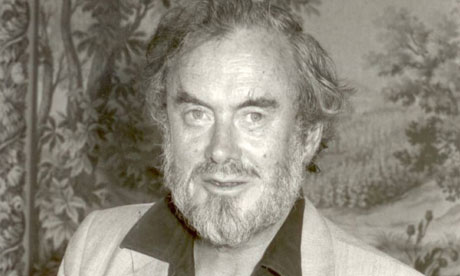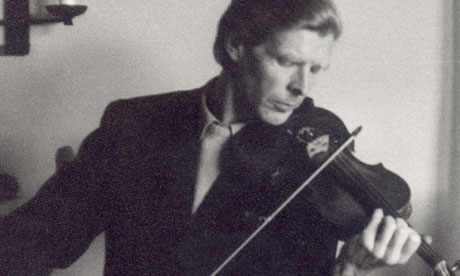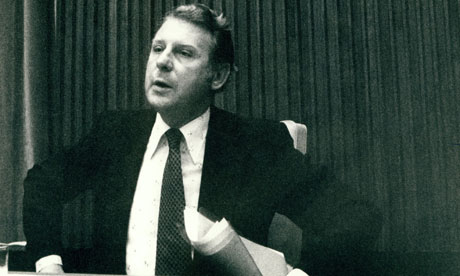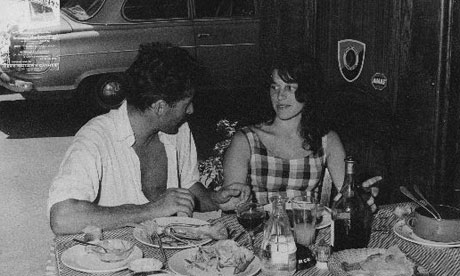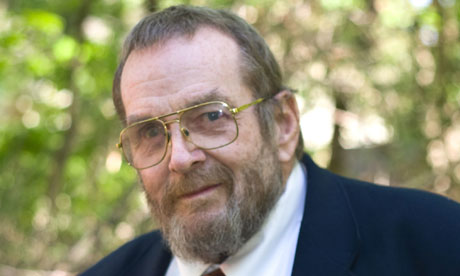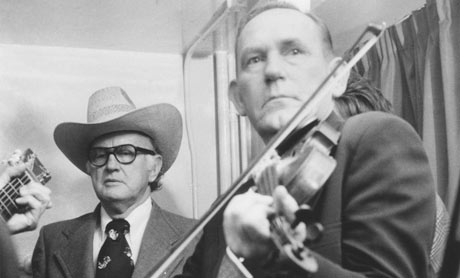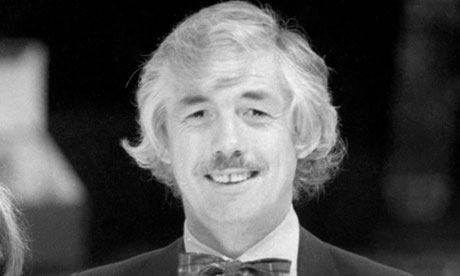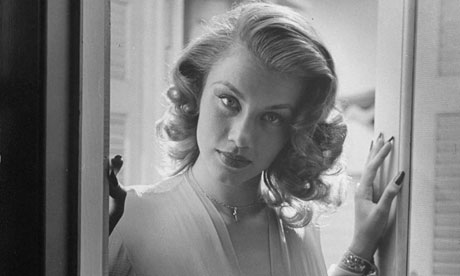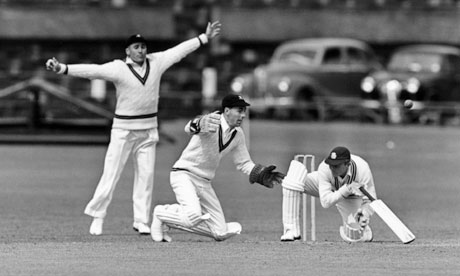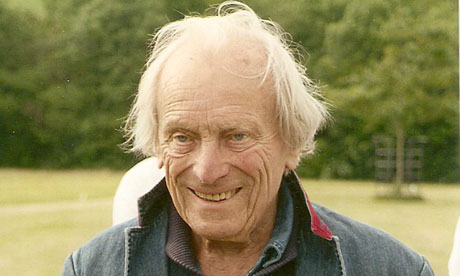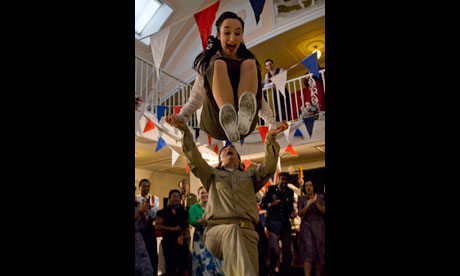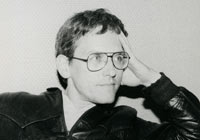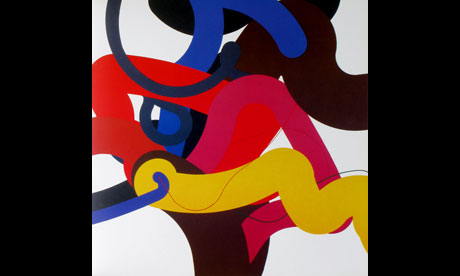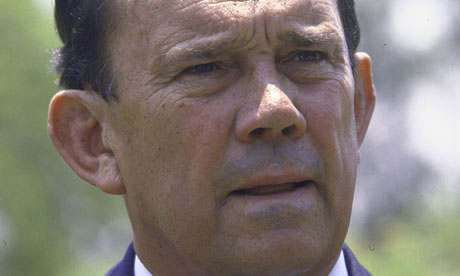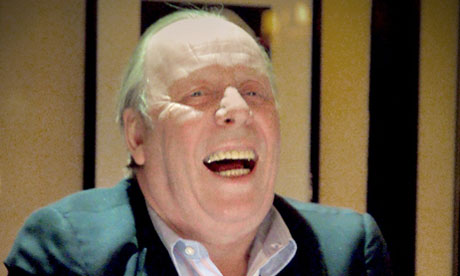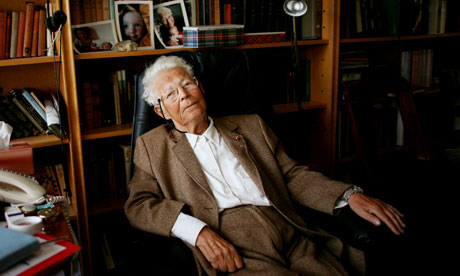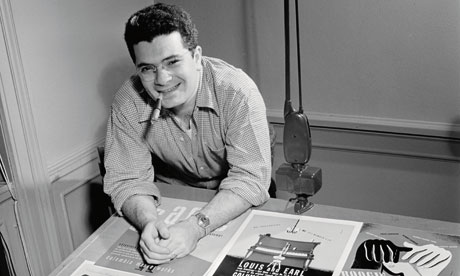
Alex Steinweiss also designed film title sequences and the poster for the original Casino Royale movie.
Alex Steinweiss, who has died aged 94, pioneered the concept of record album covers, when music was still released on 78rpm shellac, and was the inventor of the LP record sleeve. In 1939, while designing ads for Columbia Records, Steinweiss suggested adding art to the company's 78 releases, which were then generally sold in heavy paper and, for multiple-record sets, packaged in plain, book-like binding. His first cover featured the title of a collection of Rodgers and Hart show tunes up in lights on a theatre marquee. A Bruno Walter recording of Beethoven's Eroica showed a huge increase in sales with its new sleeve, and Steinweiss became Columbia's art director.
The advent of the long-playing 33⅓ record brought Steinweiss's vision to the fore. The heavy paper used for 78s damaged the narrower and more delicate grooves on the LP record, so Steinweiss designed the folded-over board format sleeve which quickly became the standard packaging for LPs. Although it was patented in his name, its rights were retained by Columbia.
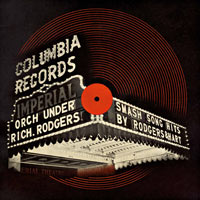
The advent of the long-playing 33⅓ record brought Steinweiss's vision to the fore. The heavy paper used for 78s damaged the narrower and more delicate grooves on the LP record, so Steinweiss designed the folded-over board format sleeve which quickly became the standard packaging for LPs. Although it was patented in his name, its rights were retained by Columbia.

Steinweiss's first cover was for a collection of Rodgers and Hart show tunes.
The cover's format was like a small canvas which lent itself to artistic experimentation, and Steinweiss's work was highly symbolic, incorporating elements of abstraction, and even cubism. His cover for George Gershwin's Rhapsody in Blue showed a piano standing under a streetlight on an otherwise blue background; for Paul Robeson's Songs of Free Men, he showed a slave's chained hand holding a knife. The distinctive "Steinweiss scrawl" of his signature typeface became instantly recognisable, and soon many artists, including the conductor Leopold Stokowski, were demanding that only Steinweiss should design their covers.
His passion for music came from his father, a shoe designer who had emigrated from Poland to the US and met his wife, a seamstress from Latvia, in New York, on the Lower East Side. They moved to Brighton Beach, Brooklyn, where Steinweiss was born. At Abraham Lincoln high school, a collection of marionettes he made for an art project attracted the attention of the teacher Leon Friend, author of the influential book Graphic Design (1936). Steinweiss was one of a group of four schoolmates whom Friend dubbed "the art squad".
After a profile of him appeared in Robert Leslie's design magazine PM, Steinweiss received a scholarship to Parsons School of Design (now Parsons the New School for Design), in New York. Looking to turn professional, he approached the illustrator Boris Artzybasheff, who convinced him to finish his degree instead. After graduating in 1937, he showed up at the studio of the renowned German poster designer Lucian Bernhard, who was so impressed with Steinweiss's portfolio that he found him a job in his friend Joseph Binder's studio.
Shortly after starting his own studio, Steinweiss was hired by Columbia, on Leslie's recommendation. During the second world war, he joined the US navy, where he designed posters while continuing to design for Columbia at night. After the war, he stayed with Columbia as a freelancer, opening the way for a legendary line of art directors including Neil Fujita and Bob Cato. This fertile period produced the cover for which he might be best known, the original 1949 Broadway cast album of Rodgers and Hammerstein's South Pacific, which remains in use today.
In the 1950s, he branched out with the major labels Decca and London and smaller ones such as Remington and Everest. He designed film title sequences, the poster for the original Casino Royale (1967) and labelling for a number of distillers. He continued designing record covers until the early 1970s, by which time he began to feel out of touch with the trends in contemporary music.
He moved to Sarasota, Florida, in 1974, to concentrate on ceramics and painting, under the pseudonym Piedra Blanca. His series of paintings Homage to Music is based on works by the great composers. In the past decade he had designed CD sleeves for small classical labels including Koch and Bridge. In 2000 he received a lifetime achievement award from the Art Directors Hall of Fame. He has been the subject of two books, For the Record (2000) and Alex Steinweiss: The Inventor of the Modern Album Cover (2009).
Steinweiss's wife, Blanche, died last year. He is survived by a son, Leslie, and a daughter, Hazel.
• Alex Steinweiss, graphic designer, born 24 March 1917; died 17 July 2011
His passion for music came from his father, a shoe designer who had emigrated from Poland to the US and met his wife, a seamstress from Latvia, in New York, on the Lower East Side. They moved to Brighton Beach, Brooklyn, where Steinweiss was born. At Abraham Lincoln high school, a collection of marionettes he made for an art project attracted the attention of the teacher Leon Friend, author of the influential book Graphic Design (1936). Steinweiss was one of a group of four schoolmates whom Friend dubbed "the art squad".
After a profile of him appeared in Robert Leslie's design magazine PM, Steinweiss received a scholarship to Parsons School of Design (now Parsons the New School for Design), in New York. Looking to turn professional, he approached the illustrator Boris Artzybasheff, who convinced him to finish his degree instead. After graduating in 1937, he showed up at the studio of the renowned German poster designer Lucian Bernhard, who was so impressed with Steinweiss's portfolio that he found him a job in his friend Joseph Binder's studio.
Shortly after starting his own studio, Steinweiss was hired by Columbia, on Leslie's recommendation. During the second world war, he joined the US navy, where he designed posters while continuing to design for Columbia at night. After the war, he stayed with Columbia as a freelancer, opening the way for a legendary line of art directors including Neil Fujita and Bob Cato. This fertile period produced the cover for which he might be best known, the original 1949 Broadway cast album of Rodgers and Hammerstein's South Pacific, which remains in use today.
In the 1950s, he branched out with the major labels Decca and London and smaller ones such as Remington and Everest. He designed film title sequences, the poster for the original Casino Royale (1967) and labelling for a number of distillers. He continued designing record covers until the early 1970s, by which time he began to feel out of touch with the trends in contemporary music.
He moved to Sarasota, Florida, in 1974, to concentrate on ceramics and painting, under the pseudonym Piedra Blanca. His series of paintings Homage to Music is based on works by the great composers. In the past decade he had designed CD sleeves for small classical labels including Koch and Bridge. In 2000 he received a lifetime achievement award from the Art Directors Hall of Fame. He has been the subject of two books, For the Record (2000) and Alex Steinweiss: The Inventor of the Modern Album Cover (2009).
Steinweiss's wife, Blanche, died last year. He is survived by a son, Leslie, and a daughter, Hazel.
• Alex Steinweiss, graphic designer, born 24 March 1917; died 17 July 2011
